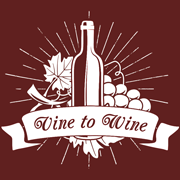“Wine marketing is a black art that a club of specialists keeps all to themselves.”
This is what you might be telling yourself if you’re venturing into this market for the first time.
Wine (in fact, any) marketers have the constant task of balancing the following (the classic 4P model if you will):
- Product (quality in the bottle; market fit)
- Pricing (competition; volumes; budgeting)
- Place (scarcity; location; distribution)
- Promotion (marketing strategy & execution plan)
Product (what type of wine are you producing?)
There are wines at different qualities and prices for a reason. If you have the advantage of a marketing team you’d be able to strategise on customer needs in the market you’re trying to enter and what the market is doing in terms of trends (Chenin Blanc anyone?).
Brand vs Product
Wine startups rely heavily on quality (unless they are going for cheap and nasty), but it’s a constant battle between budget and quality. Bigger brands are able to add a premium to their wines but are also able to attract bigger names on the winemaking front and the cycle completes itself.
Why do bigger wine brands often make average tasting wine?
Sometimes I buy wine from a reputable brand only to be heavily disappointed in the taste. An untrained palate perhaps, but I seriously can’t believe my taste is to blame each time over many years of drinking wine. Perhaps the brand is just taking advantage of millions invested over the years.
Work what you have to work with?
Some wine farmers don’t have a choice and do the best with what they have to work with in terms of terroir, the plant and weather where they are located. This can also be a major advantage of course in terms of the quality you’re able to produce, but would you as the farmer rather produce your own wine, or sell to the highest bidder if your highest quality blocks are in demand? It’s a personal choice of lifestyle and necessity I guess. We’d suggest investing in a viticulturist who understands your location & has sufficient experience.
Determining your wine’s product market fit
Whatever you do, this is not something you want to get wrong, but it might just (after reading the section above) be a matter of determining it after the fact. All in all, you’d want to be focusing on using yields as efficiently as possible for maximum returns.
Pricing – How to price your wine
What does it cost to produce wine per bottle?
This can be broken down to cost of grape production, barrels used (oak, tanks?), bottle costs, labelling and cork/caps. The cost of these vary wildly and depend on various factors, some of which we’ve covered in the sections above which mostly affect the ‘wine grape production’ part.
Depending on where the wine fits into the market, this will affect the production process in terms of barrels, bottles, labelling and cork/caps. And don’t forget export costs if you’re distributing to foreign countries.
That brings up the option of exporting in bulk and bottling on-continent. This is also an option, but some wine doesn’t travel well in bulk.
Leave room for wine promotion
You should at least leave yourself enough room in order to run specials if you want to. Margins will vary greatly depending on who is buying your wine and the volumes bought. Smaller producers are squeezed by the retail giants and the larger retail chains are ruthless on the margins. If you’re doing it yourself, prepare to hustle!
Place
Location of the vineyards
Often one of the strongest USP’s for a wine brand is the geographical location of the vineyards that particular wines’ grapes are sourced from. The location of the vineyards is essential in defining a big part of the character of the wine and customers will often buy a wine blindly because it’s from a specific region known for quality.
A scarcity of supply in the location
Concepts like ‘single block’ vintages create the scarcity of supply and play nicely into pricing strategies if marketing is done properly around a wine. It doesn’t necessarily always apply, as certain smaller estates charge premiums for smaller yields while the quality is not always on par with the competition in the area.
Distribution
Cost of distribution certainly affects price. Small estates tend to keep things more locally due to smaller quantities, or sometimes earmark significant quantities of inventory for International distribution in bulk. Large distributors tend to have most prominent regions covered. If an estate is more remote, it’ll add to the final retail cost.
Promotion of wine
The good wine sells itself, right?
That statement might be true, but if you’re looking for a larger audience, you’ll require firstly a regional, later national and ultimately an International footprint for your marketing.
Wine Tastings & Food Pairings
It can be daunting when you’re starting out, but most new estates start with private events (sponsoring wines perhaps), food pairings & local distribution to restaurants.
If your labels stand out and have the right info on them (think website), hopefully, you’ll get some foot traffic into your tasting room (even if it’s by appointment only initially).
Retail
Distributors & retail chains generally help with pushing campaigns, but it comes at a cost. The options for visibility on the shelf, shelf talkers, neck hangers, catalogues and more are endless and all add to the bottom line. Selling retail is usually in bulk which means very low prices per bottle, but hopefully high-impact distribution and exposure. Hopefully.
(Don’t forget the) Winemaker
Everyone has to start somewhere. Some estates have owner-winemakers and other estates contract winemakers in. Bringing an experienced winemaker (and don’t forget your expert viticulturist & engineers) onboard will save you years of trial and error. Not only that, but an experienced winemaker will also bring an audience with them as they have a track record of quality.
Wine Critics & Media
Critics can make or break you. That is a fact. You would probably want to be a few vintages in (unless you’re starting with an experienced winemaker) before inviting critics to review your wine.
Wine Bloggers, YouTubers & Influencers
When you organise those events it can be daunting to find food and wine bloggers to invite to your events. A good place to start would be to attend a few events yourself to see who the regulars are and read some of their material to see if their style and their audience is a good fit for your brand.
Just understand that wine bloggers and influencers work on fair exchange and won’t ‘write you a nice review for a few bottles of wine’. Just like the media, you take care of wine bloggers and influencers in the industry because they usually come with large, engaged audiences who listen to what they say.
Video content (that Vloggers / YouTubers) create is an extremely powerful way to create rich media content. If you think a picture is worth a thousand words, a video is more likely 100,000. The audio-visual just has a charm to it and if done right, can portray your brands in a fashion that’s very appealing to these influencers’ audiences.
Just take your time, get to know the crowd and then embark on some collaborations. It’s always a joint effort in doing these kinds of campaigns.
And don’t forget…
Wine is a product made to bring friends together. Enjoy it with a smile and don’t take things too seriously. If you have more tips or suggestions on adding value to this article, hit us up in the comments and we might make some edits for this to be a good resource for all aspiring winemakers and marketers.
If you liked this article, please feel free to share on your social channels or link back to us.









